How to Talk Art in Italian: Italian at the Uffizi, Borghese, and Italian Museums
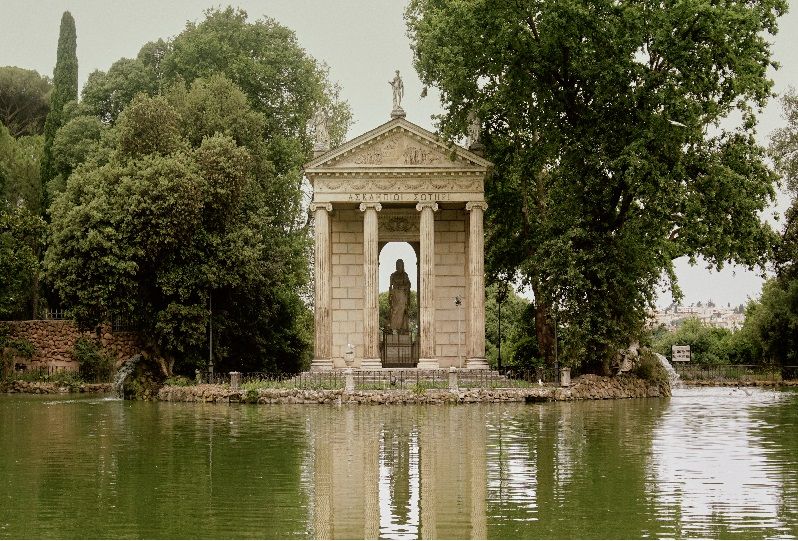
Do you need to know how to talk art in Italian to visit Italian museums and art galleries? Usually, no, because large museums and art galleries like the Uffizi and the Borghese label all their exhibits in English. But what if you wanted to go somewhere off the beaten track like the National Archeological Museum of Tarquinia, a small archeological museum in Lazio? Italian suddenly becomes essential when there’s no English translation. Even in the larger museums and galleries, understanding Italian will enrich your appreciation of what you’re seeing.
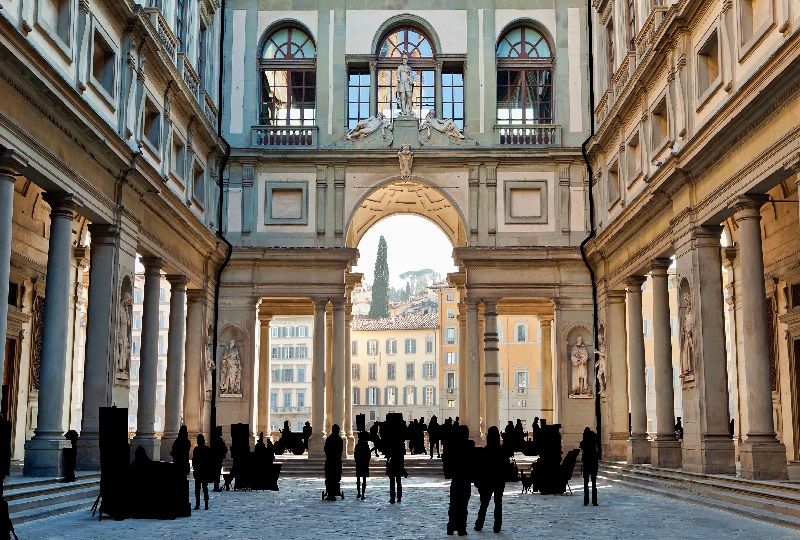
Basics
You might find it useful to know some basic Italian phrases for navigating Italian museums and art galleries. You also need to know about the different types of museums, galleries and historical sites in Italy. These are:
- museo – “museum”. Italy has lots of museums. These include museums of national importance (musei nazionali) and archeological museums, musei archeologici.
- galleria d’arte/pinacoteca – “art gallery”. Museo d’arte – “art museum” is also used. Galleria by itself can also mean “art gallery”.
- parco archeologico – “archeological park”. This can also be called scavi – “excavations”/“archeological dig”.
- centro storico – “historical city center”/“historical district”.
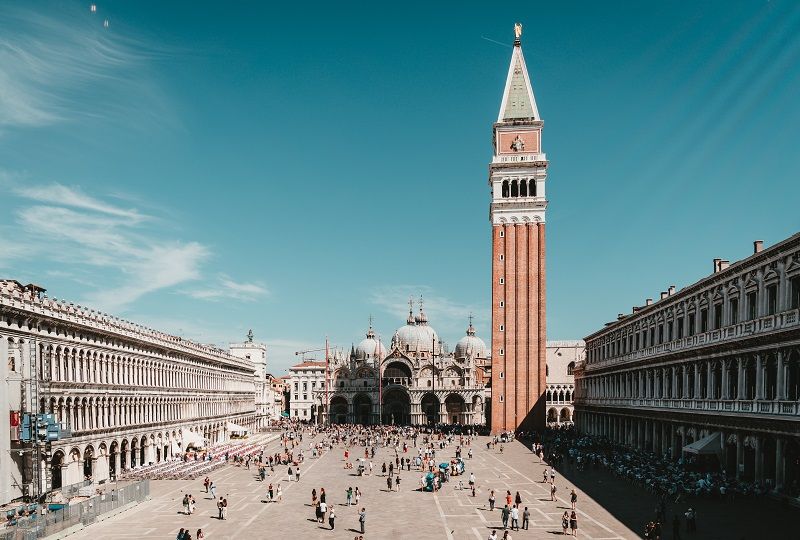
Time and Periods
Italian, like English, has words for describing different historical eras, which often appear in museums and galleries.
Here are some key ones:
- Età della pietra – Stone Age
- Età del bronzo – Bronze Age
- Età del ferro – Iron Age
- Antichità /tempi antichi – Antiquity
- Medioevo – Middle Ages
- Rinascemento – Renaissance (adjective form, rinascamentale)
- Barocco – Baroque
- Illuminismo – Enlightenment.
Generic names for an era are epoca, età, era.
Centuries – Secoli
Italian does centuries slightly differently than English.
Up to the twelfth century (dodecisimo secolo) and from the twenty-first century (ventunesimo secolo), Italian talks about centuries in the same way as English – the ordinal number (for example, ninth, tenth) of the century followed by the word century (secolo), for example, decimo secolo, "tenth century", dodicesimo secolo, "twelfth century”.
However, between the thirteenth and twentieth centuries, Italians describe centuries in hundreds, a bit like how we say "eighteen-hundreds". This means centuries are written using the name of however many hundreds they are after 1000 CE, for example, the nineteenth century (1800s) is called the Ottocento('800s). Centuries written like this are always capitalized and you don't need to use the word secolo after them. Form the names of centuries between 1200 CE and 2000 CE by adding the number of centuries to the word cento, for example, Due-cento, the thirteenth century.
In summary:
- centuries between the thirteenth century and the twentieth century (1200s-1900s) are formed in hundreds of years after 1000 CE
- centuries before or after this (1100s or earlier, 2000s or later) are formed in the same we talk about centuries.
Here is a handy table to help you remember how to talk about centuries in Italian.
|
Years |
English |
Italian |
|
900s |
Tenth century |
decimo (secolo) |
|
1000s |
Eleventh century |
undecisimo (secolo) |
|
1100s |
Twelfth century |
dodicesimo (secolo) |
|
1200s |
Thirteenth century |
Duecento |
|
1300s |
Fourteenth century |
Trecento |
|
1400s |
Fifteenth century |
Quattrocento |
|
1500s |
Sixteenth century |
Cinquecento |
|
1600s |
Seventeenth century |
Seicento |
|
1700s |
Eighteenth century |
Settecento |
|
1800s |
Nineteenth century |
Ottocento |
|
1900s |
Twentieth century |
Novecento |
|
2000s |
Twenty-first century |
ventunesimo (secolo) |
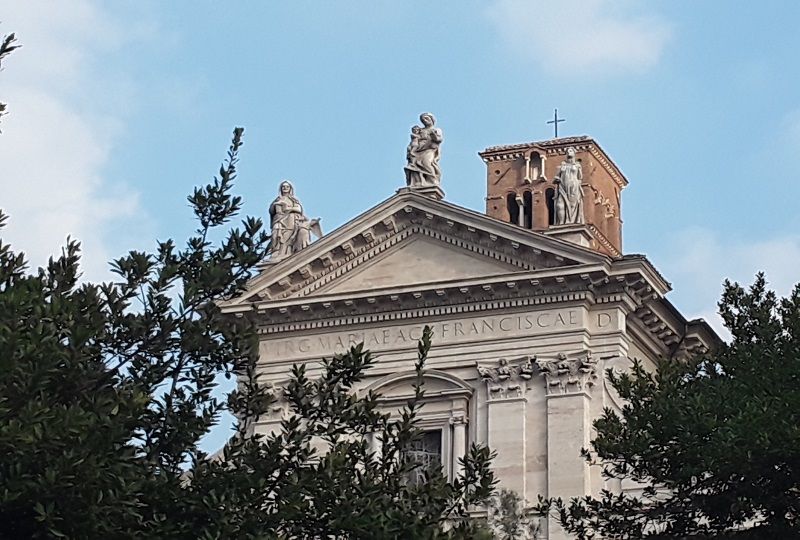
Alla galleria – At the Art Gallery
English art students will recognize some Italian words you’ll find in an art gallery, such as chiaroscuro (“light and dark”). In other cases, the English word is derived from the Italian. Here’s a list of key words you need to know at Italian art galleries:
- maestro – master
- opera/lavoro – work
- nascita – birth (rinascita, rebirth)
- statua – statue
- busto – bust
- scultore – sculptor
- affresco – wall painting, fresco
- dipinta/quadro – painting
- dipingere – to paint
- pittura – painting (abstract noun) e.g., pittura barocco (“Baroque painting”)
- pittore – painter
- bronzo – bronze (adjective form, di bronzo/bronzeo)
- marmo – marble (adjective form, di marmo, marmoreo)
- appartenere – belong to (an artist)
- detto di – known as (an artist)
- soggetto – subject
- rappresentare/raffigurare – depict, portray
- ritratto – portrait
- ritrarre – paint/sketch (a portrait)
- natura morta – still life
- trittico – triptych.
-ismo, -esco and -isti
Italian, like English, can make nouns and adjectives from famous people’s names. This is done in a similar way to English, though Italian uses these words more often than English. These words often appear in art galleries.
In Italian, if you want to say Caravaggism (an art style based on the works of Caravaggio), this is simply Caravaggismo (very similar to English).
If you want to make it an adjective, for example, Caravaggesque, you use the suffix -esco, e.g., caravaggesco. Note that this is still similar to the English ending “-esque”, which is derived from French instead of Italian.
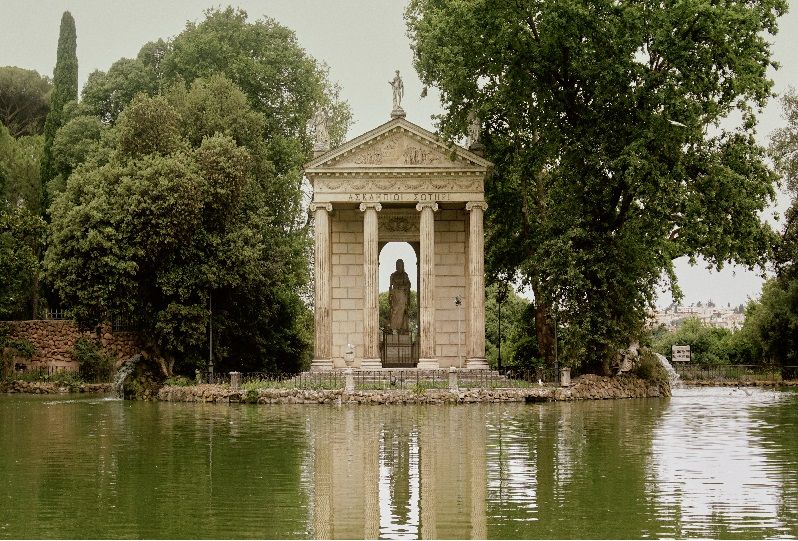
Al museo – At the Museum
Knowledge of Italian can also enhance your experience at the museum. Much of the vocabulary you need to know centers around the Renaissance and Ancient periods. Here are some useful words:
- storia – history
- beni culturali – cultural heritage
- sala – room (of the museum)
- antico – ancient (e.g., antico romano – “Ancient Roman”, antico Greco, “Ancient Greek”)
- Etrusco – Etruscan
- condottiero – (Renaissance) mercenary captain
- vaso – vase
- ceramica (le ceramiche)/terracotte – pottery, earthenware
- relievo – relief, bas-relief
- mosaico – mosaic
- fregio – frieze
- dorato – gold-plated.
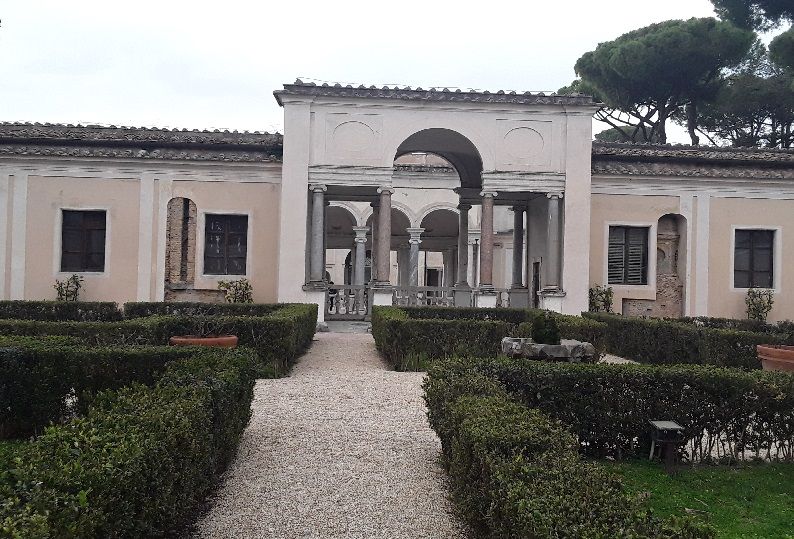
Al parco archeologico – At the Archeological Park
Italy is full of archeological parks or excavations (scavi), which range from famous sites like Pompeii to less well-known digs like the Necropolis of the Banditaccia in Cerveteri. Here are some terms that will help you enjoy the archeological park:
- rovine – ruins
- tomba – tomb
- tumolo – grave mound
- sarcofigo – sarcophagus
- patrimonio dell'umanità UNESCO/sito UNESCO – UNESCO world heritage site
- reperto (archeologico) – (archeological) find.
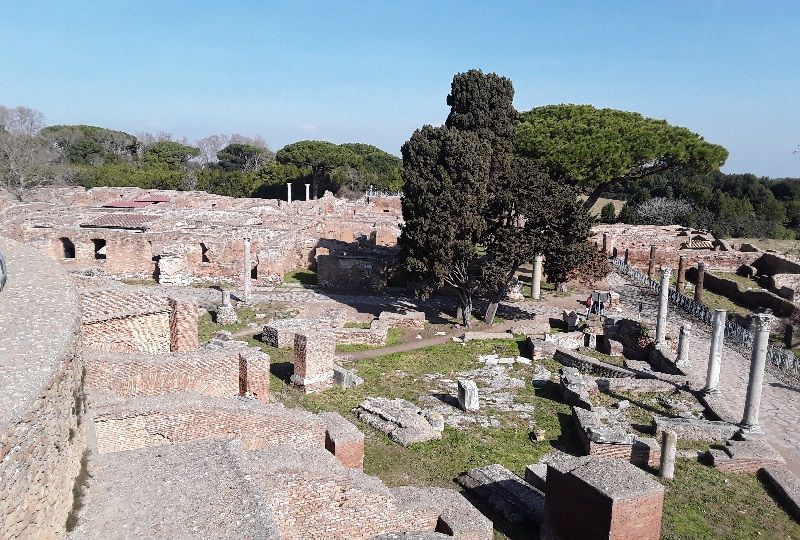
Al centro storico – In the historic district
Every town and city in Italy has its own historical city center (centro storico) or district filled with architecture dating back hundreds or even thousands of years. You can visit many of these historical buildings and churches, plenty of which will come with fascinating stories about when and why they were built.
Here are some basic words for finding your way around the historic district:
- fontana – fountain (e.g. Fontana di Trevi)
- piazza – square
- arco – arch
- parco/giardini – gardens
- palazzo – prominent building/palace/mansion (e.g. Palazzo Pitti)
- castello – castle
- ponte – bridge
- torre – tower
- cortile – courtyard
- soffitto – ceiling
- parete – walls.
Churches – Chiese
Many of the most beautiful buildings you see in Italy are churches. Here are some church specific words to help you appreciate these buildings:
- chiesa – church
- coro – choir part of church
- duomo – cathedral/dome
- capella – chapel.
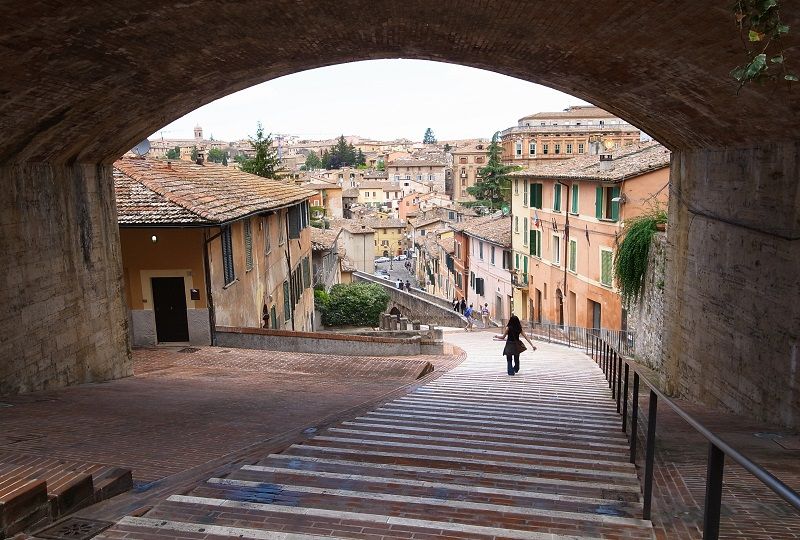
Talking About History – Passato Remoto
When talking about historical figures or events, Italians use the passato remoto tense instead of the passato prossimo for completed past actions. For example, “Da Vinci painted the Mona Lisa” would be Da Vinci dipinse la Mona Lisa, not Da Vinci ha dipinto la Mona Lisa.
However, the Italians still use the passato prossimo for historical events that are still affecting the present, for example, Gli Etruschi ha lasciato il segno nell’ architettura di Perugia, “The Etruscans have made their mark on the architecture of Perugia”.
The passato remoto is also sometimes used instead of the passato prossimo in Southern Italy when speaking about more recent completed events in the past.
Conjugation
We can classify the conjugation of the passato remoto into three different types – regular verbs, fully irregular verbs and partially irregular verbs.
Verb forms in the passato remoto conjugate a bit differently from the present. Here are regular verbs from the 3 conjugations (-are, -ere, -ire) in the passato remoto.
|
Parlare – "to
talk" (1st conjugation) |
Credere – "to
believe” (2nd conjugation) |
Dormire – "to
sleep" (3rd conjugation) |
|
parl-ai |
cred-ei |
dorm-ii |
|
parl-asti |
cred-esti |
dorm-isti |
|
parl-ò |
cred-é |
dorm-ì |
|
parl-ammo |
cred-emmo |
dorm-immo |
|
parl-aste |
cred-este |
dorm-iste |
|
parl-arono |
cred-erono |
dorm-irono |
Irregular Verbs
Because the passato remoto is descended from the Latin perfect (which often had a different root than the present tense), many verbs are at least somewhat irregular in the passato remoto.
All verbs that are irregular in passato remoto have a different stem in the 1st person singular and 3rd person to the 1st person plural and 2nd person.
For example:
|
Italian |
English |
|
feci |
I came |
|
facesti |
you (s.) came |
|
fece |
he/she/it came |
|
facemmo |
we came |
|
faceste |
you (pl.) came |
|
fecero |
they came |
Essere ("to be"), as usual, is even more irregular.
|
Italian |
English |
|
fui |
I have been |
|
fosti |
You (s.) have been |
|
fu |
he/she/it has been |
|
fummo |
we have been |
|
foste |
you (pl.) have been |
|
furono |
they have been. |
You may also find it helpful to learn how irregular passato remoto verbs are formed from different stems.
Fully Irregular Verbs
Only a few verbs are irregular in the passato remoto in all forms. These are:
|
Infinitive |
Passato remoto –1st
person singular |
Passsato remoto – 2nd
person singular |
|
essere – to be |
fui |
fosti |
|
dare – to give |
diedi |
desti |
|
dire – to say |
dissi |
dicesti |
|
stare – to stay |
stetti |
stesti |
|
bere – to drink |
bevvi |
bevesti |
|
fare – to do |
feci |
facesti |
|
tradurre – to translate |
tradussi |
traducesti |
Fully irregular verbs are also conjugated differently, regardless of which conjugation they come under. Note that the conjugation of these irregular verbs is similar to the 2nd (-ere) conjugation.
|
Stems |
Example: dare – “to
give” |
|
-i |
died-i |
|
-esti |
d-esti |
|
-e |
died-e |
|
-emmo |
d-emmo |
|
-este |
d-este |
|
-ero |
died-ero |
Partially Irregular Verbs
To make things more complicated, some passato remoto verbs are irregular in the 1st person singular and 3rd person only. These verbs conjugate their regular parts according to their conjugations, for example, with the 3rd conjugation (-ire) verb venire, we have:
|
Italian |
English |
|
venni |
I came |
|
venisti |
you (s.) came |
|
venne |
he/she/it came |
|
venimmo |
we came |
|
veniste |
you (pl.) came |
|
vennero |
they came |
There are a lot of verbs that are partially irregular in the passato remoto. Here are some of the most common.
|
Infinitive |
Passato remoto – 1st
person singular |
Passsato remoto – 2nd
person singular |
|
avere – to have |
ebbi |
avesti |
|
venire – to come |
venni |
venisti |
|
scrivere – to write |
scrissi |
scrivesti |
|
mittere – to send |
misi |
mittesti |
|
leggere – to read |
lessi |
leggesti |
|
sapere – to know |
seppi |
sapesti |
|
nascere – to be born |
nacque |
nascesti |
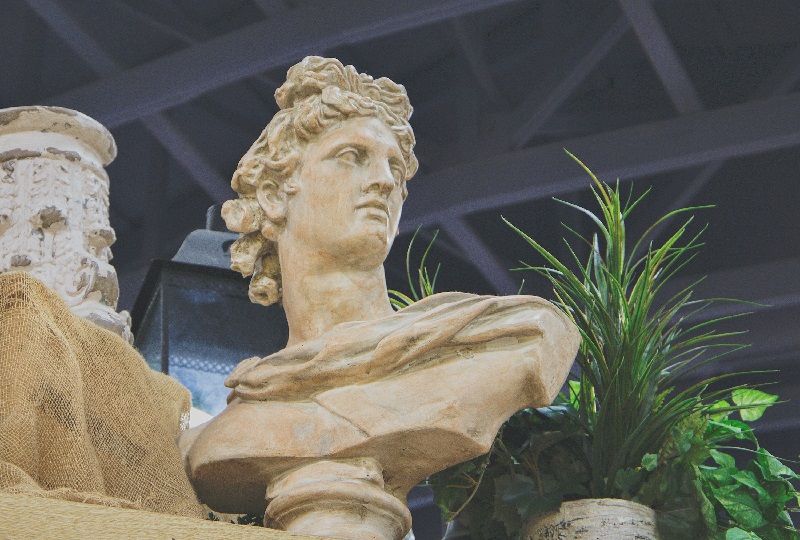
Having a Conversation About Art in Italian
Now you have the vocabulary and grammar to talk art in Italian, let’s have a look at some of the phrases you could use to have a conversation about art in Italian. Here are some things you can try.
- Mi piace… – “I like…” (for example, Mi piace gli Uffizi, “I like the Uffizi”; Mi piace la pittura rinascamentale “I like Renaissance painting”).
- Mi non piace… –“I don’t like...” (for example, Mi non piace il museo Capitolino “I don’t like the Capitoline Museum”).
- Mi piace X più di Y –“I like X more than Y” (for example, Mi piace Erculaneo più di Pompeii, “I like Herculaneum more than Pompeii”).
- Preferito – “favorite” (for example, Michelangelo é il mio preferito pittore, “Michelangelo is my favorite painter”).

Improving Your Italian for Museums and Art Galleries
From Ancient Rome to the Renaissance and beyond, Italy has a lot to offer tourists interested in Italian art and history. Whether you’re visiting the Borghese or a small local museum, knowing some Italian can help you enjoy Italy’s rich past. To improve your Italian vocabulary for your trip to Italy’s art galleries and museums, check out Speechling’s Italian vocabulary flashcards and Italian Fill In the Blank exercises.
